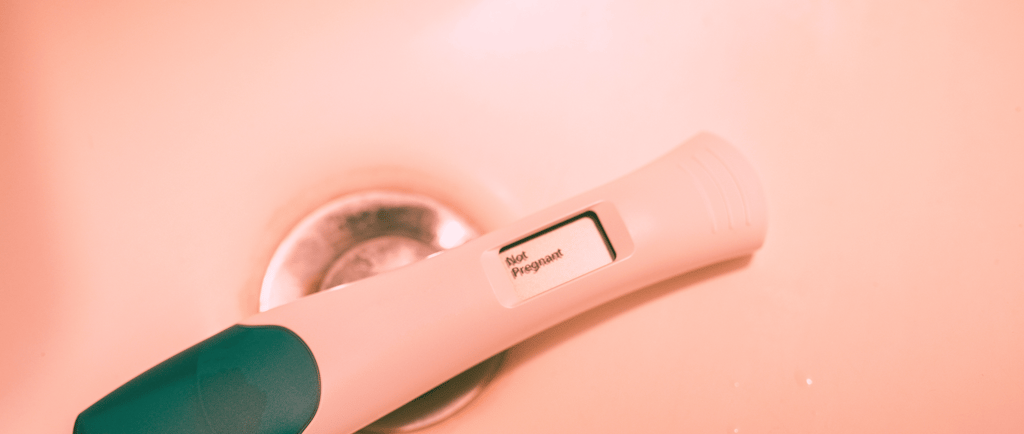
call, viber, or WHATSAPP +63976-170-9480 now
The Complete Guide to Home Urine Pregnancy Tests: Understanding Your Options
Discover everything you need to know about home urine pregnancy tests in this comprehensive guide. Learn about different test types, how they work, and tips for accurate results. Whether you’re looking for early detection, convenience, or cost-effective options, this article will help you choose the right test and interpret results confidently.
PREGNANCY TESTS
11/19/20248 min read


Home urine pregnancy tests offer a convenient, private, and reliable method for determining pregnancy from the comfort of your own home. With an array of options available on the market, knowing the differences between each type can help you select the most suitable test for your situation. This comprehensive guide dives into the various types of home pregnancy tests, how they function, and essential tips to consider when using them. By understanding these distinctions, you can make an informed decision that suits your needs, whether you prefer a basic strip test, a midstream pee stick, or a high-tech digital option. Each test type has its unique features and sensitivities, allowing you to find the perfect balance of cost, accuracy, and ease of use. Read on to discover the key differences, best practices for reliable results, and insights into choosing a test that aligns with your preferences and testing timeline.
Different Types of Collection for Pregnancy Tests
When choosing a home pregnancy test, understanding the different types of urine collection methods can help you select the most convenient and comfortable option.
Strip Type Pregnancy Test
A strip-type pregnancy test requires a collection cup for the urine sample. The user dips the test strip into the collected urine for a specific period to obtain results. This type of test is straightforward and usually more affordable, making it popular for those who prioritize cost-effectiveness. However, the need for a separate collection cup can be less convenient compared to other methods.
Cassette Type Pregnancy Test
A cassette-type pregnancy test also requires a collection cup and comes with a dropper to transfer the urine to the test window. This method allows for controlled application, reducing the risk of errors and ensuring accurate results. While this type offers precision, the process of transferring urine with a dropper can be slightly more cumbersome than direct midstream tests.
Pee Stick Type Pregnancy Test
A pee stick type, or midstream pregnancy test, is designed for direct use. Users can urinate directly on the stick, making it a convenient, mess-free option. This type is often preferred for its simplicity and ease of use, as it eliminates the need for any additional collection tools. While typically more expensive than strip tests, many find the convenience and straightforward usage worth the cost.
What Is a Pregnancy Test?
A pregnancy test is a diagnostic tool used to determine if a person is pregnant by detecting the presence of the hormone human chorionic gonadotropin (hCG) in the body. This hormone is produced by the placenta shortly after a fertilized egg attaches to the uterine lining. Home pregnancy tests are specifically designed to detect hCG in urine and are widely used due to their convenience, affordability, and privacy.
Most home pregnancy tests are highly accurate when used correctly and can provide results within minutes. They come in different formats to suit user preferences and needs. Each type of test varies in sensitivity, method of use, and ease of interpretation.
Product Highlights
The Egens Strip Pregnancy Test is a regular test that is affordable and easy to use. It requires a collection cup, and the test strip is dipped into the urine to provide results. This test is valued for its straightforward use and budget-friendly nature. However, handling a collection cup can be less convenient compared to midstream tests. It is an excellent option for those seeking cost-effective reliability.
The Partners Pregnancy Test is a cassette-type regular pregnancy test that requires a collection cup and a dropper to transfer urine to the test window. One of the main advantages of this test is its controlled application, allowing for precise transfer of urine to the test window, which reduces the likelihood of errors and ensures accurate results. Users often appreciate the reliability and clarity of results that this type offers. However, the need for a collection cup and dropper can make it slightly more cumbersome and less convenient compared to midstream pee stick tests. It is an ideal choice for those who value precision and don’t mind the extra step of transferring urine.
The Egens Pregnancy Test Stick is a regular test that can be peed on directly, offering convenience and ease of use. It is highly user-friendly, eliminating the need for a collection cup or dropper, which simplifies the testing process. The test can detect hCG levels as low as 25 mIU/ml, providing reliable results when used at the appropriate time. However, while it is convenient, it may be slightly more expensive than basic strip tests.
The Shex Early Pregnancy Test is similar to the First Response Early Pregnancy Test but with a slightly lower sensitivity, capable of detecting hCG levels as low as 10 mIU/ml. This test is a pee stick type and can detect pregnancy as early as the day of your missed period. It offers an easy-to-use, straightforward design, allowing for reliable early detection and quick results. One major advantage is its high sensitivity, which makes it suitable for early detection, giving users peace of mind sooner. Additionally, the pee stick format makes it convenient and mess-free to use. However, the cost may be higher compared to standard strip tests, and while it provides accurate results, some users might find digital tests easier to interpret. Balancing these pros and cons can help users choose the best test for their individual needs.
First Response Early Pregnancy Test
First Response is a leading brand known for its high sensitivity, capable of detecting hCG levels as low as 6 mIU/ml. It’s a pee stick type that can be used directly, providing early results with clear accuracy. One advantage of this product is its ease of use and straightforward interpretation, making it ideal for those seeking fast and reliable early results. However, its higher sensitivity and convenience often come at a slightly higher cost compared to basic strip tests. Users should weigh the benefits of early detection and accuracy against the price when choosing this option.
Clearblue Digital Early Pregnancy Test
The Clearblue Digital Early Pregnancy Test is a premium, easy-to-use option known for its advanced features and high accuracy. It detects hCG levels as low as 6 mIU/ml and can identify pregnancy up to 6 days before a missed period. This test stands out because it presents results in words, such as "Pregnant" or "Not Pregnant," making interpretation straightforward and reducing confusion that may arise from line-based tests. Its digital format provides a clear, reliable experience, ensuring peace of mind for users who value precision and simplicity. While the digital readout is convenient and user-friendly, the Clearblue Digital Early Pregnancy Test is typically more expensive than non-digital options. Users should consider whether the added clarity and convenience justify the cost, especially if repeated testing is anticipated. The test's ease of use and clear display make it a strong choice for those seeking a straightforward and dependable testing experience.
How to Choose the Right Pregnancy Test for You
When deciding which home pregnancy test to use, several factors come into play. Consider the sensitivity of the test, especially if you wish to test before a missed period—early pregnancy tests can detect lower levels of hCG. The type of test—whether strip, cassette, or pee stick—can affect convenience, ease of use, and accuracy. For those who value simplicity and minimal handling, midstream pee stick tests are ideal. If you prefer controlled application, a cassette test might be more suitable. Budget and how soon you want results are also important. Ultimately, understanding your priorities will help you choose the best pregnancy test to match your needs.
Understanding hCG levels and what they mean is also crucial when choosing and interpreting pregnancy tests. The hormone hCG, or human chorionic gonadotropin, begins to be produced shortly after conception and is essential for maintaining early pregnancy. Its concentration doubles approximately every 48-72 hours in early pregnancy, which is why some tests can detect pregnancy sooner than others. Higher sensitivity tests can detect lower levels of hCG, making them ideal for early detection. Knowing the hCG levels that a test can detect and how it corresponds to the timeline of a missed period will aid in selecting the most suitable pregnancy test.
Common Mistakes to Avoid When Using a Home Pregnancy Test
Using a home pregnancy test seems simple, but there are common pitfalls that can lead to inaccurate results. One mistake is testing too early. While some tests can detect low hCG levels, testing before your body produces enough hormone may result in a false negative. Always read the instructions carefully, as each test may have different guidelines for timing and usage. Another common issue is misinterpreting results; for example, faint lines may be confusing. Ensure you check the result within the recommended time frame, as reading it too late can lead to an evaporation line that may be mistaken for a positive result. Avoid consuming excessive fluids before testing, as diluted urine may affect the test’s accuracy. Following these tips can help you achieve the most reliable and clear outcome from your home pregnancy test.
To get a more accurate result, it is best to test in the morning using your first urine of the day as it contains a more concentrated amount of hCG. Testing later in the day, especially if you are testing earlier than your period, may yield in a false negative as your urine may contain diluted amount of hCG.
Interpreting Faint Lines on Pregnancy Tests
Seeing a faint line on a pregnancy test can be confusing. A faint positive line usually means that the test has detected hCG in the urine, indicating pregnancy. However, the faintness of the line can be due to various factors, such as testing early when hCG levels are still low or using a less sensitive test. To ensure clarity, retesting after a few days or using a more sensitive pregnancy test can help confirm the result. Always follow the instructions for the specific test to understand how results should be interpreted and when they should be read.
Conclusion
Choosing the right home pregnancy test and using it correctly can make a significant difference in obtaining accurate results. By understanding the types of tests available, their features, and best practices for use, you can navigate this aspect of reproductive health with confidence. Avoid common mistakes and be mindful of faint lines for clearer interpretations. If uncertainty remains, consulting with a healthcare professional can provide additional assurance and guidance. Taking these steps can help ensure a reliable, stress-free testing experience.
Different Types of Home Urine Pregnancy Tests
The sensitivity and type of the test can determine how early it can detect pregnancy. Additionally, knowing the types and features of different tests helps users choose the best option for their needs and timing, ensuring peace of mind and accurate results.
Regular Pregnancy Test
Regular pregnancy tests are the most common type. These tests are typically designed to detect pregnancy about 5 days after a missed period and can detect as low as 25 mIU of hCG/ml. They provide reliable results for most women and are often the most budget-friendly option.
Key Features:
Can detect as low as 25 mIU of hCG/ml
Detects pregnancy 5 days after a missed period
Available in strip, cassette, and pee stick types
Affordable, widely available
Early Pregnancy Test
Early pregnancy tests are more sensitive than regular tests and can detect lower levels of hCG, sometimes as low as 6 mIU/ml. These tests can provide results as early as 6 days before a missed period, giving you peace of mind sooner. They are ideal for those who wish to confirm pregnancy at the earliest possible time, offering reliable results when used as directed.
Key Features:
Can detect pregnancy 0-6 days before a missed period
Sensitive to lower levels of hCG (as low as 6 mIU/ml)
Available in various formats, including pee stick types
Slightly more expensive than regular tests
Digital Early Pregnancy Test
Digital early pregnancy tests are an advanced version of early pregnancy tests that display results in a digital format, eliminating any ambiguity. These tests can detect hCG levels as low as 6 mIU/ml and can be used as early as 6 days before a missed period. They present results in clear words such as "Pregnant" or "Not Pregnant," making them easier to read than traditional line-based tests. For the most reliable outcome, testing in the morning using your first urine is recommended, as it contains the highest concentration of hCG.
Key Features:
Digital display shows clear results (e.g., "Pregnant" or "Not Pregnant")
Detects hCG as low as 6 mIU/ml
Can be used up to 6 days before a missed period
Eliminates interpretation errors with straightforward results
Slightly more expensive than non-digital options
Empowerment
Your trusted source for women's health solutions.
Privacy
Trust
info@morningafterpillcebu.com
Morning After Pill Cebu
© 2025. All rights reserved.
